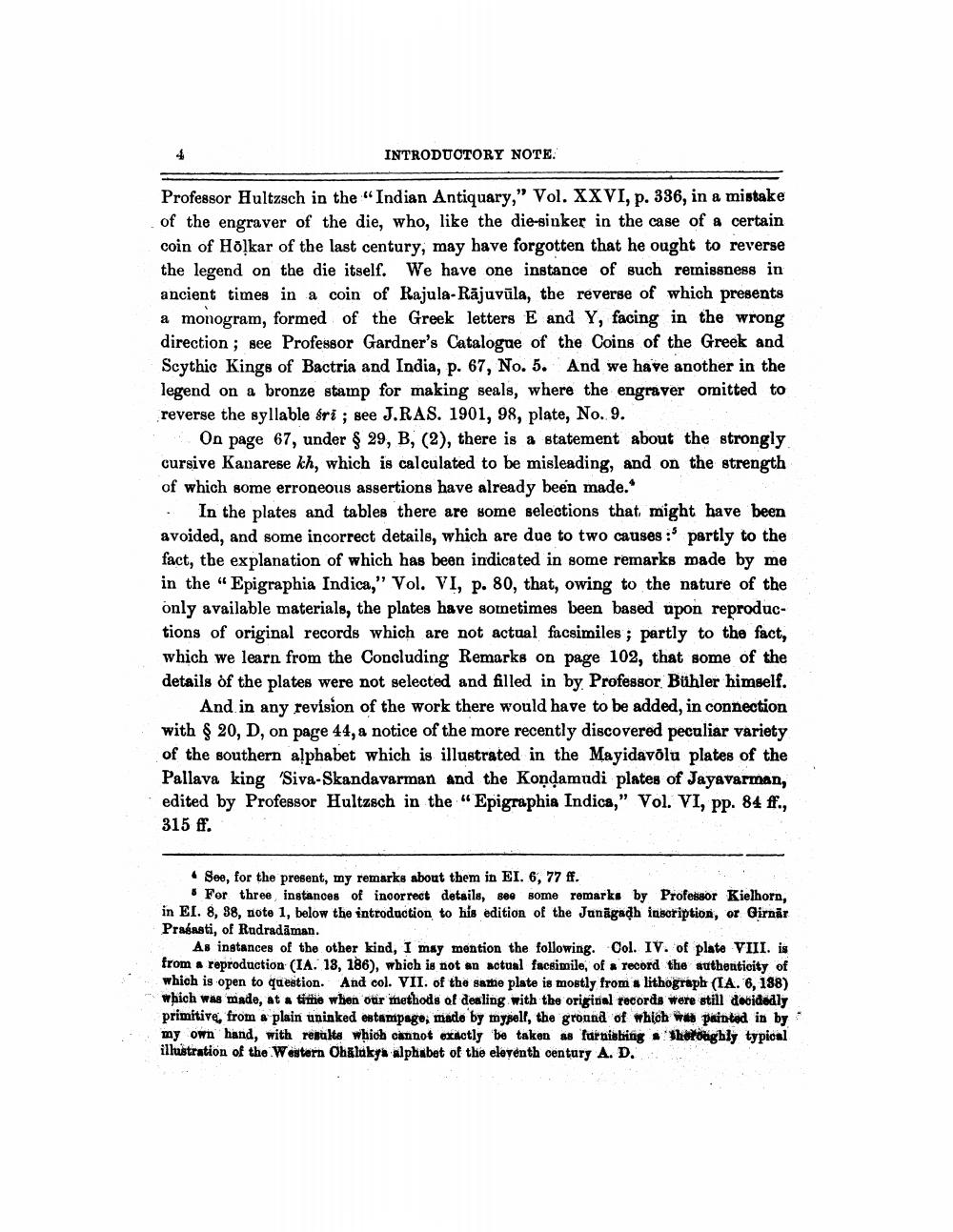________________
INTRODUCTORY NOTE:
Professor Hultzsch in the Indian Antiquary," Vol. XXVI, p. 336, in a mistake of the engraver of the die, who, like the die-sinker in the case of a certain coin of Holkar of the last century, may have forgotten that he ought to reverse the legend on the die itself. We have one instance of such remissness in ancient times in a coin of Rajula- Rājuvūla, the reverse of which presents a monogram, formed of the Greek letters E and Y, facing in the wrong direction ; see Professor Gardner's Catalogue of the Coins of the Greek and Scythic Kings of Bactria and India, p. 67, No. 5. And we have another in the legend on a bronze stamp for making seals, where the engraver omitted to reverse the syllable fri; see J.RAS. 1901, 98, plate, No. 9.
On page 67, under $ 29, B, (2), there is a statement about the strongly cursive Kanarese kh, which is calculated to be misleading, and on the strength of which some erroneous assertions have already been made." . In the plates and tables there are some selections that might have been avoided, and some incorrect details, which are due to two causes :' partly to the fact, the explanation of which has been indicated in some remarks made by me in the "Epigraphia Indica," Vol. VI, p. 80, that, owing to the nature of the only available materials, the plates have sometimes been based upon reproductions of original records which are not actual facsimiles; partly to the fact, which we learn from the concluding Remarks on page 102, that some of the details of the plates were not selected and filled in by Professor Bühler himself.
And in any revision of the work there would have to be added, in connection with § 20, D, on page 44, a notice of the more recently discovered peculiar variety of the southern alphabet which is illustrated in the Mayidavõlu plates of the Pallava king 'Siva-Skandavarman and the Kondamudi plates of Jayavarman, edited by Professor Hultzsch in the "Epigraphia Indica," Vol. VI, pp. 84 ff., 315 ff.
* See, for the present, my remarks about them in EI. 6, 77 ff.
For three instances of inoorrect details, see some remarks by Professor Kielhorn, in EL. 8, 88, note 1, below the introduction to his edition of the Junagadh insoription, or Girnar Prasasti, of Rudradāman.
As instances of the other kind, I may mention the following. Col. IV. of plate VIII. is from a reproduction (IA. 13, 186), which is not an actual facsimile, of a record the authenticity of which is open to question. And col. VII. of the same plate is mostly from a lithograph (IA. 6,188) which was made, at a time when our methods of dealing with the original records were still decidedly primitive, from a plain uninked estampage, made by mysell, the ground of which was painted in by my own hand, with results which cannot exactly be taken as furnishing thatóghly typical illustration of the Western Ohalakyn alphabet of the eleventh century A. D.




